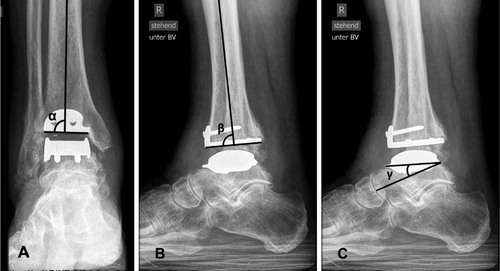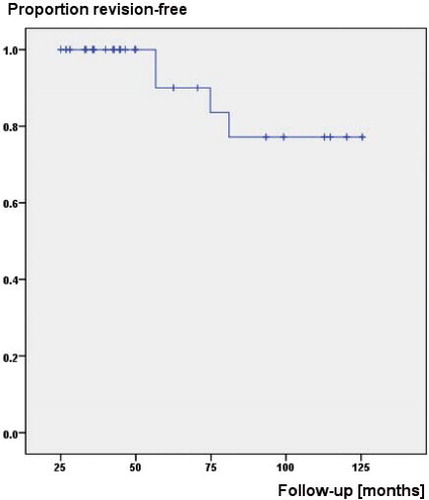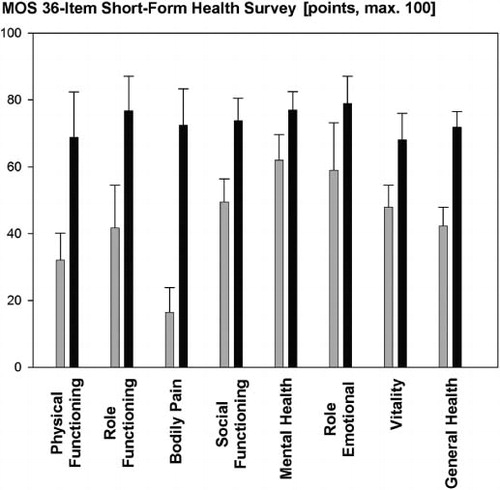Figures & data
Table 1. Description of surgery in 26 patients with simultaneous bilateral TAR
Figure 1. Angular measurements of prosthesis component positioning. α-angle (panel A) and β-angle (panel B) were measured between the longitudinal axis of the tibia and the articular surface of the tibial component in the AP and lateral views, respectively. γ-angle (C) was measured between a line drawn through the anterior shield and the posterior edge of the talar component and a line drawn along the center of the talar neck on the lateral view.

Table 2. Postoperative complications and revision surgeries in 26 patients with simultaneous bilateral TAR
Figure 2. Kaplan-Meier survival curve with revision for aseptic loosening of the tibial and/or talar component as endpoint.

Figure 3. Preoperative (gray) and postoperative (black) quality of life for all patients assessed with the SF-36. Mean (SD). p < 0.001 for all pre- and postoperative comparisons.
